Instagram Ads Cost for Small Businesses: Maximizing ROI on a Small Budget
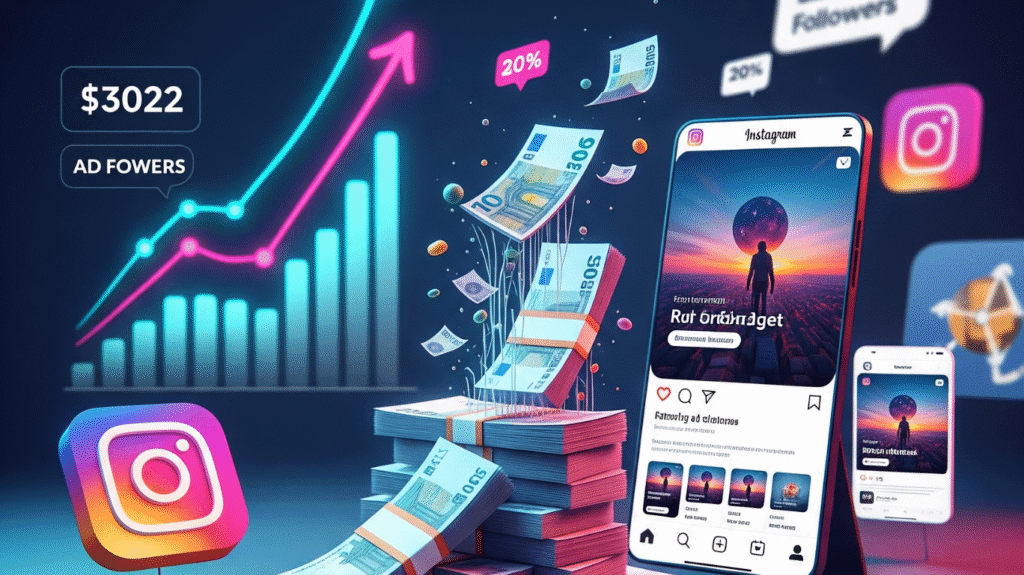
A strong online presence is essential for small businesses to succeed in the current digital era. Instagram, with over 2 billion monthly active users, offers a powerful visual platform for businesses to connect with potential customers, build brand awareness, and drive sales. This aligns perfectly with the broader shifts in online marketing. For more insights into staying ahead, check out our guide on Social Media Trends 2025: A Comprehensive Guide for Small Businesses. Many small business owners, however, face challenges with budget constraints and confusion regarding advertising costs on such a vast platform. The good news is that significant impact can be achieved with Instagram Ads even without a massive marketing budget.
Understanding Instagram Ads Cost
Instagram, as part of Meta (Facebook), uses an auction-based system for ad pricing, meaning costs are dynamic and influenced by various factors.
Breakdown of How Instagram Ads Are Priced
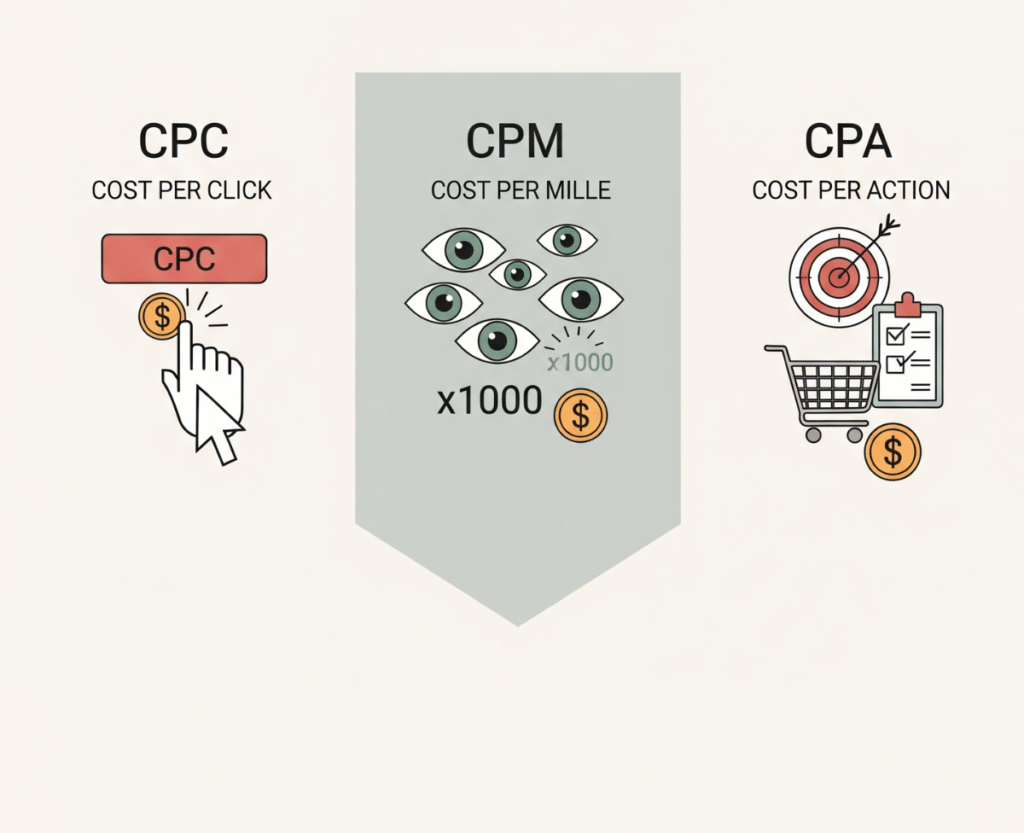
- Cost Per Click (CPC): This is perhaps the most common and straightforward bidding option. Every time an ad is clicked, you are charged. This model is ideal for objectives like driving website traffic, app installs, or lead generation, where the action of clicking is a primary goal.
- Cost Per Impression (CPM): Cost Per Impression (CPM): CPM charges you for each 1,000 impressions that your advertisement gets. An impression just indicates that your advertisement was seen, even if no one clicked on it. This model is best suited for brand awareness campaigns where the goal is to maximize visibility and reach a large audience.
- Cost Per Action (CPA): This model is more advanced and focuses on specific actions, such as a purchase, a sign-up, or a form submission. You pay only when a desired action is completed. While often more expensive per action, it can be highly effective for conversion-focused campaigns as you’re directly paying for measurable results.
Factors That Influence Instagram Ads Cost
The following factors affect how much your Instagram advertising cost:
- Target Audience: More specific and in-demand audiences generally result in higher costs due to increased competition.
- Industry/Competition: Highly competitive industries (e.g., e-commerce, real estate) tend to have higher ad costs.
- Seasonality: Ad costs often increase during peak seasons or holidays due to higher demand.
- Ad Placement (Stories, Reels, Feed, Explore): Different placements like Stories, Reels, Feed, and Explore have varying costs and effectiveness. Reels ads can sometimes offer lower costs for wider reach.
- Ad Quality and Relevance Score: High-quality, relevant ads that receive more engagement tend to perform better and can result in lower costs. If you’re struggling with ad performance, our guide on Top 15 Instagram Mistakes Small Businesses Should Avoid (and How to Fix Them) might offer valuable insights.
Realistic Average Cost Ranges (with examples in USD + PKR)
While exact figures fluctuate daily, here are some realistic average cost ranges to give you an idea (as of late 2024 / early 2025):
-
- Average CPC:
- USD: $0.50 – $2.00+
- PKR: PKR 10 – PKR 50+ (can be lower for broad audiences or higher for very niche targeting)
- Average CPM:
- USD: $5.00 – $15.00+
- PKR: PKR 100 – PKR 400+ (again, depends heavily on audience and competition)
- Average CPA (highly variable): This can range from a few dollars/hundreds of rupees to hundreds of dollars/thousands of rupees depending on the action (e.g., lead vs. high-value purchase).
- Average CPC:
How to Set a Small Budget for Instagram Ads
One of the biggest misconceptions about Instagram advertising is that you need a hefty budget to see results. This couldn’t be further from the truth. With a strategic approach, small businesses can achieve remarkable outcomes even with limited funds. The secret is to spend money wisely and intentionally.
Step-by-Step Process:
- Define Your Objective: Before you even think about money, clearly define what you want to achieve with your Instagram ads. Are you looking to:
- Increase brand awareness?
- Drive website traffic?
- Generate leads?
- Boost sales for a specific product?
- Gain new followers? Your objective will dictate your bidding strategy, ad creative, and ultimately, how you allocate your budget. Without a clear goal, you risk wasting money on unfocused campaigns.
- Start with a Test Budget: For beginners and small businesses in Pakistan, it’s highly recommended to start with a modest test budget. This allows you to gather data and learn what works without significant financial risk.
- Recommended Test Budget (PKR): Begin with something like PKR 1000 to PKR 3000 for a short campaign (e.g., 3-5 days). This amount is usually sufficient to get meaningful initial data on your audience’s response to your ads.
- Recommended Test Budget (USD): Approximately $5 to $15 for a similar duration. This initial investment helps you understand your audience’s behavior, the effectiveness of your ad creative, and the typical costs for your specific targeting.
- Adjust Based on Data: The beauty of digital advertising is its measurability. Once your test campaign runs for a few days, analyze the data. Look at:
- Reach and Impressions: How many people saw your ad?
- Clicks (for traffic/conversion campaigns): How many people clicked on your ad?
- Engagement Rate: How many likes, comments, shares did your ad receive?
- Cost Per Result: What was the cost for each desired action (e.g., cost per click, cost per lead)? Based on these insights, you can adjust your budget, refine your targeting, or tweak your ad creative. If a campaign is performing well, consider increasing the budget incrementally. If it’s underperforming, pause it, analyze what went wrong, and try a different approach.
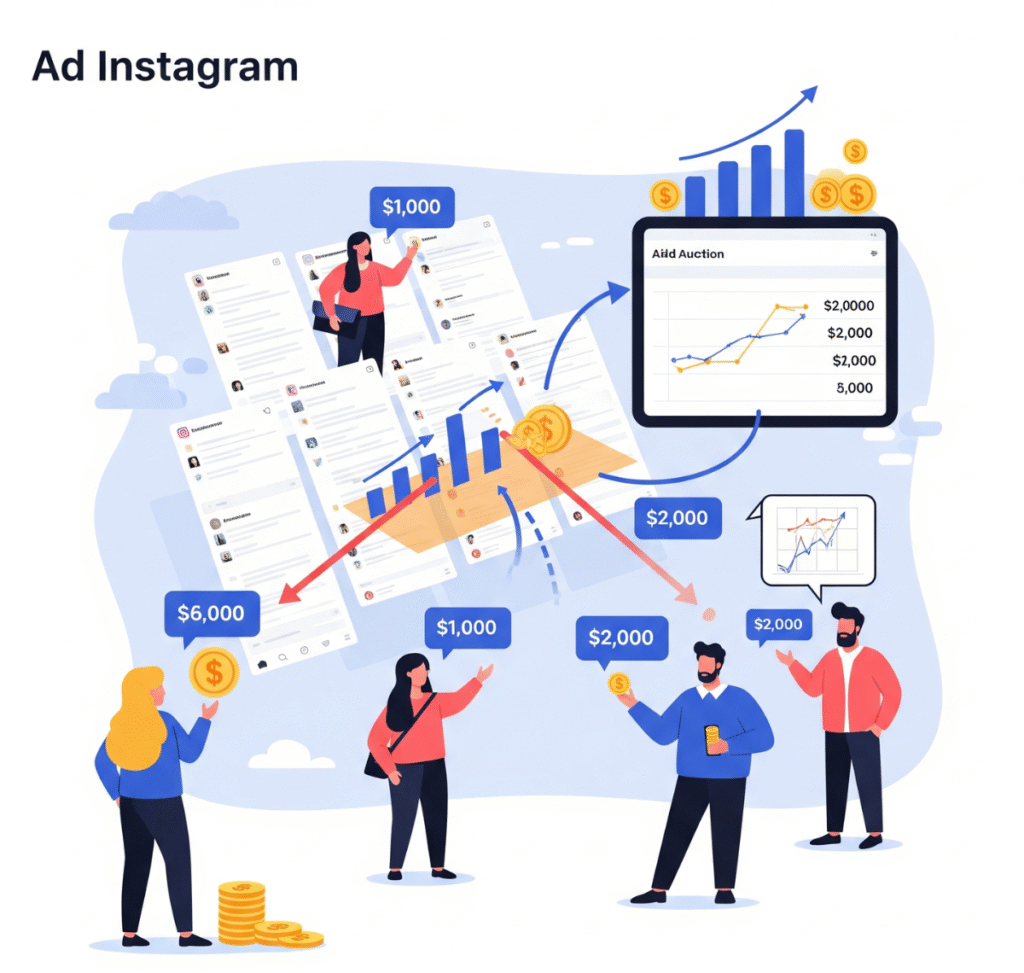
Small Budget ≠ Small Results: Importance of Strategy
It’s a frequent misperception that less funding means negligible outcomes. This is absolutely not true. A small budget forces you to be more strategic, focused, and creative. It encourages you to:
- Be hyper-targeted: Instead of broad audiences, you’ll focus on highly specific segments most likely to convert.
- Optimize creative: Every ad image or video needs to be compelling and stop the scroll.
- Monitor performance closely: You’ll be more diligent in tracking your KPIs and making swift adjustments.
This strategic approach, born out of budget necessity, often leads to more efficient and higher-ROI campaigns than those with large, unfocused spending.
Recommended Minimum Budgets for Beginners in Pakistan
- Daily: PKR 200-300 (approx. $0.75 – $1) for a short-term campaign.
- Weekly: PKR 1000-2000 (approx. $3.50 – $7) for a better sense of performance. Consistency with a small daily budget often yields better results than a large spend over a very short period.
Myth-Busting: Why You Don't Need a Huge Budget to Win
- Focus on ROI, Not Spend: The goal is a positive return on investment.
- Algorithm Favors Relevance: Instagram’s algorithm rewards relevant and engaging ads; a small-budget, highly relevant ad can outperform a poorly targeted, high-budget one.
- Testing and Iteration: Small budgets allow for continuous testing and iteration, enabling you to learn and scale what works best.
- Specific Goals: Small budgets naturally lead to more specific and achievable goals.
Maximizing ROI: Proven Strategies for Small Budgets
Achieving a high return on investment (ROI) with a small Instagram ads budget requires a disciplined and strategic approach. Spending wiser is more important than spending more. By focusing on three critical pillars, you can significantly amplify the effectiveness of your limited funds.
The 3 Key Pillars of Instagram Ads ROI:
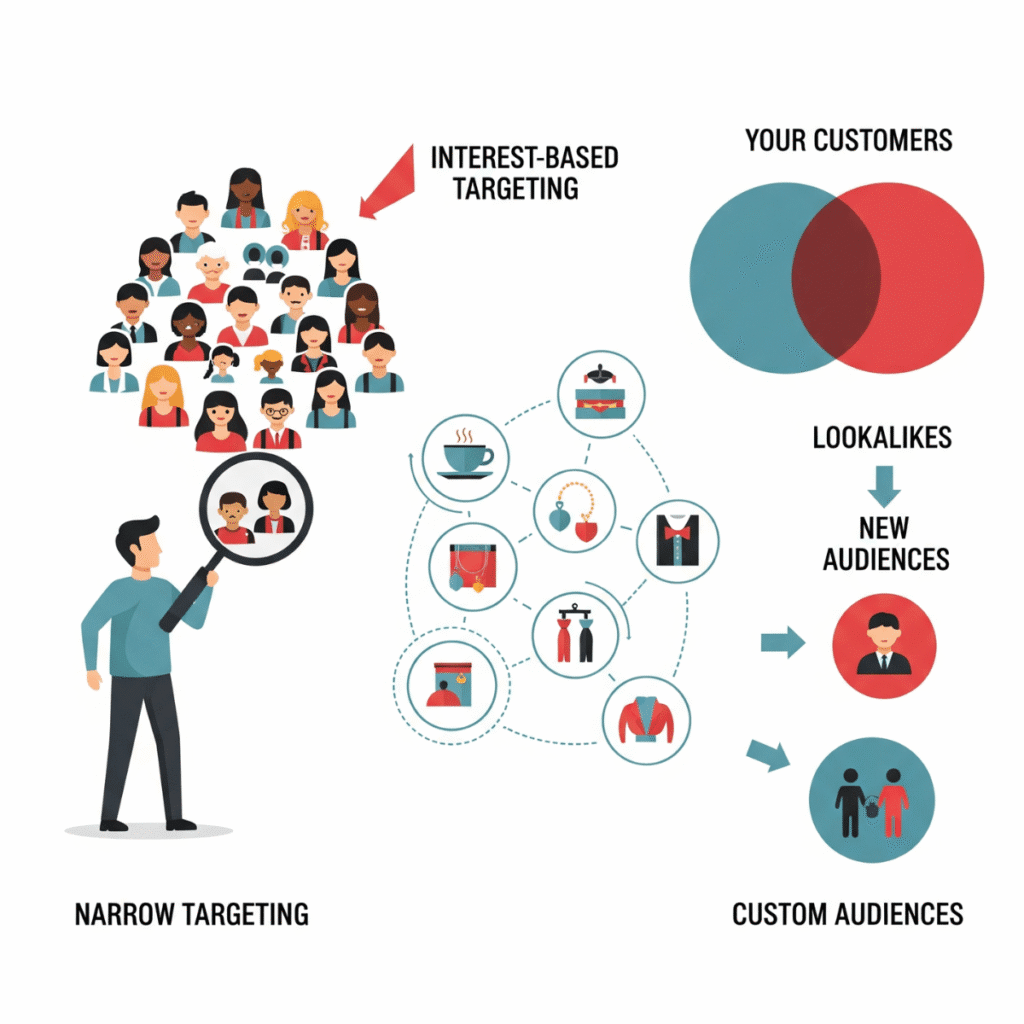
- Targeting the Right Audience: This is arguably the most crucial element for small budgets. Wasting impressions on people who are not interested in your product or service is a sure way to deplete your budget quickly.
- Narrow Targeting: Instead of broad demographics, hone in on very specific interests, behaviors, and demographics that align perfectly with your ideal customer. If you sell handmade jewelry, target people interested in “jewelry making,” “artisanal crafts,” “ethical fashion,” or specific brands similar to yours.
- Interest-Based Targeting: Leverage Instagram’s vast data on user interests. Combine multiple, highly relevant interests rather than just one. For example, a coffee shop might target people interested in “coffee,” “cafes,” “latte art,” and “local businesses.”
- Lookalike Audiences: Once you have a customer list (even a small one) or a strong engaged audience on Instagram/Facebook, create Lookalike Audiences. Instagram will find new users who share similar characteristics to your existing valuable customers, significantly improving targeting accuracy and ROI. Start with 1% lookalikes for the highest similarity.
- Custom Audiences: Retarget website visitors, app users, or people who have interacted with your Instagram profile. These are warm leads who already know your brand, making them much more likely to convert at a lower cost.
- Crafting Thumb-Stopping Creatives: Your ad creative is your storefront on Instagram. In a crowded feed, it needs to grab attention instantly. For small budgets, every impression counts, so your visuals and copy must be compelling.
- High-Quality Images & Videos: Invest time in producing visually appealing content. Blurry images or amateur videos will be scrolled past. Use good lighting, clear focus, and appealing aesthetics.
- Show, Don’t Tell: Instead of just describing your product, show it in action or demonstrate its benefits. A short, engaging video showcasing how your product solves a problem is often more effective than a static image.
- Leverage User-Generated Content (UGC): Encourage customers to share photos or videos using your product. UGC feels authentic and can be incredibly powerful in building trust and driving conversions, often at a lower cost than professionally produced content.
- Aesthetic Alignment: Ensure your ad creative aligns with Instagram’s visual aesthetic. Use bright, engaging colors and appealing compositions.
- Clear and Concise Copy: Your ad copy should be short, to the point, and highlight the key benefit or solution your product offers. Emojis can be used to increase visual appeal and break up text.
- Compelling Call-to-Actions (CTAs) that Drive Action: Tell people exactly what you want them to do.
- Clear and Direct: Use action-oriented verbs (e.g., “Shop Now,” “Learn More”).
- Create Urgency/Scarcity: If applicable, add a sense of urgency (e.g., “Limited Stock”).
- Benefit-Oriented: Frame the CTA around the user’s benefit.
- Match Objective: Ensure your CTA aligns with your campaign objective.
Use of Split Testing (A/B Testing) to Optimize Ads
-
-
Split testing is indispensable for small budgets. It enables you to simultaneously run two or more ad variants (e.g., with various audiences, CTAs, headlines, or graphics) and observe which one performs better.
- How it works: Allocate a small portion of your budget to testing variations. For instance, run Ad A with one image and Ad B with another.
- What to test: Test one variable at a time (e.g., two different images, two different headlines, two different CTAs, or two slightly different target audiences).
Learn and Scale: Once you identify the winning variation, pause the underperforming one and reallocate the budget to the successful ad. This guarantees that your funds are always allocated to the most successful targeting or creative.
-
Leverage Instagram Reels Ads for Maximum Reach at Lower Costs
Reels are Instagram’s fastest-growing content format, and the algorithm often prioritizes them, leading to higher organic and paid reach. For more strategies on video content, explore our broader Instagram Growth Tips 2025: How to Boost Your Reach and Followers Effectively.
- Why Reels? Currently, Reels ads can offer lower CPMs (cost per 1,000 impressions) compared to feed ads, meaning you can reach more people for the same budget.
- Engaging Format: Reels are designed for short, engaging, vertical video content. Embrace creativity, music, and trending sounds to make your ads feel native to the Reels environment.
- Educational or Entertaining: Think about how you can educate or entertain your audience in a short video format while subtly promoting your product.
Why Retargeting is a Must for Small Budgets
-
Retargeting (also known as remarketing) is the process of showing ads to people who have already interacted with your brand.
- Increased Conversion Rates: These audiences are “warm” and have expressed some interest.They are much more likely to convert than cold audiences, meaning your ad spend is significantly more efficient.
- Lower Costs: Because these audiences are more receptive, the cost per conversion is often lower.
- Types of Retargeting Audiences:
-
- Website visitors (install the Facebook Pixel)
- Instagram profile engagers (people who visited your profile, liked posts, saved content)
- Customers from a customer list (upload your email list)
- Video viewers (people who watched a certain percentage of your ad videos)
Instagram Ads Bidding Strategies ExplainedExpectations
Understanding Instagram’s bidding strategies is crucial for optimizing your ad spend, especially when operating on a small budget. These strategies determine how your budget is used in the ad auction and can significantly impact your campaign’s performance and cost-effectiveness.
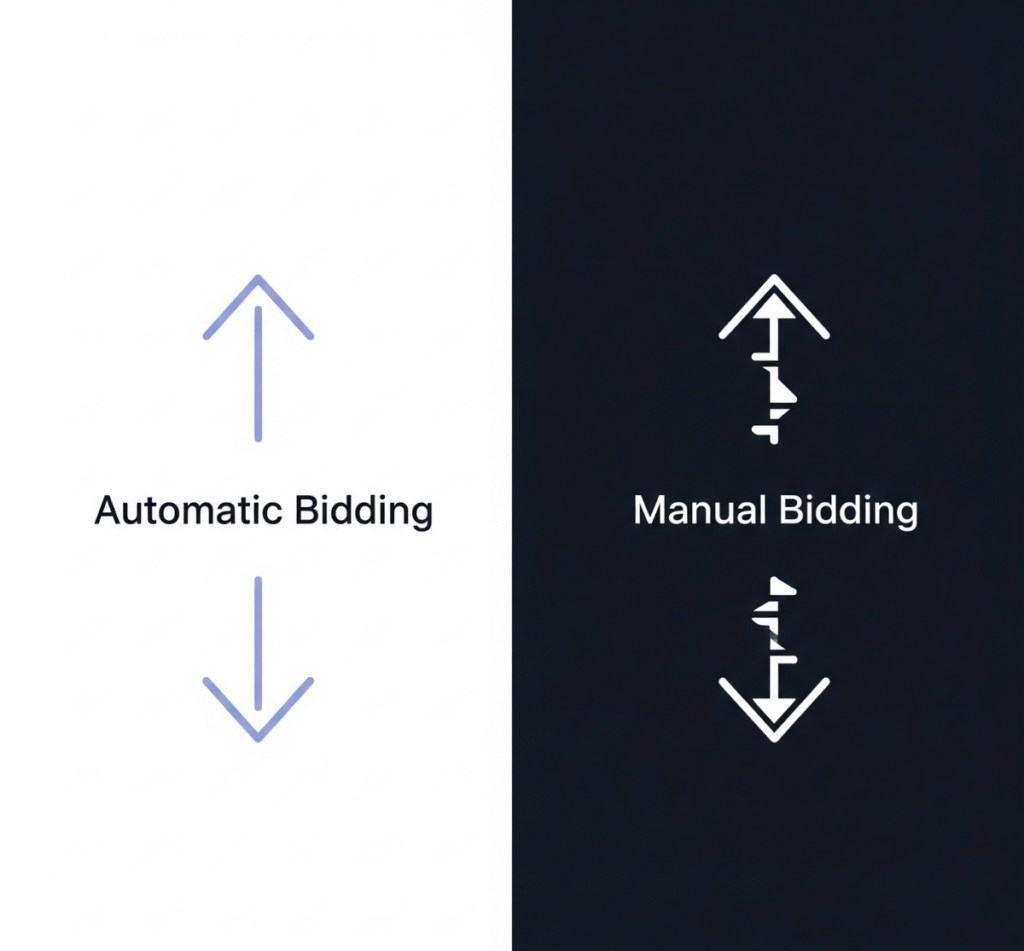
Manual Bidding vs. Automatic Bidding
Instagram provides a variety of bidding options through Meta Ads Manager:
- Automatic Bidding (Lowest Cost / Bid Strategy):
- How it works: This is the default and most commonly used bidding strategy, especially for beginners. Instagram’s algorithm automatically bids on your behalf to get the most results for your budget. It aims to achieve the lowest cost per result (e.g., lowest CPC, lowest CPA) within your specified budget.
- When to use:
- Beginners: If you’re new to Instagram ads, start with automatic bidding. It simplifies the process and allows the algorithm to optimize your spending.
- Maximizing Volume: When your primary goal is to get as many results as possible for your budget, and you’re less concerned about the exact cost per result (as long as it’s efficient).
- Learning Phase: It’s excellent for the initial learning phase of a campaign, where the algorithm gathers data on your audience and ad performance.
- Manual Bidding (Bid Cap / Cost Cap / Target Cost):
- How it works: With manual bidding, you set a specific bid amount.
- Bid Cap: You tell Instagram the maximum amount you’re willing to bid in the auction. Instagram will try not to exceed this bid.
- Cost Cap: You establish a desired average cost per outcome. Instagram will try to keep your average cost per result at or below this target, but it might bid higher or lower in individual auctions.
- Target Cost: (Less common now, often replaced by Cost Cap for simplicity) You tell Instagram your desired average cost per result, and it tries to achieve that specific average.
- When to use:
- Advanced Advertisers: Manual bidding requires a deeper understanding of your industry, audience, and ad performance metrics.
- Controlling Costs: If you have a strict CPA or CPC goal and need to ensure your costs don’t exceed a certain threshold.
- Scaling: When you have a consistently performing campaign and want to scale while maintaining a specific cost per result.
- High Competition: In highly competitive auctions, a well-placed manual bid can sometimes secure valuable impressions that automatic bidding might miss.
Best Bidding Strategies for Small Businesses
For most small businesses, especially those new to Instagram ads and operating on a limited budget, the Automatic Bidding (Lowest Cost) strategy is generally the best starting point.
- Why it’s ideal for small budgets:
- Simplicity: It removes the guesswork of setting bids, allowing you to focus on creative and targeting.
- Efficiency: The algorithm is designed to get you the most results for your money.
- Learning Phase Optimization: It helps the algorithm learn about your campaign’s performance more quickly.
Once you have accumulated significant data and understand your average Cost Per Result (e.g., average CPC or CPA), you might consider experimenting with a Cost Cap strategy if you have very specific profitability targets. However, introduce this cautiously and monitor performance closely, as setting the cap too low can severely limit your ad’s reach.
Avoiding Common Bidding Mistakes That Waste Budget
- Setting Your Budget Too Low: Extremely low daily budgets (e.g., PKR 50 / $0.15) hinder the algorithm’s learning and performance. Aim for a minimum of PKR 200-300 daily.
- Frequent Budget Changes: Constant changes restart the “learning phase,” leading to unstable performance and higher costs.
- Ignoring the Learning Phase: Give the algorithm time to learn (usually 50 conversions in 7 days for conversion campaigns) before making drastic changes.
- Not Aligning Bidding with Objectives: Ensure your bidding strategy matches your campaign goal (e.g., CPC for traffic, CPA for conversions).
- Over-Optimizing Manual Bids (if using them): Setting bid caps too low can limit reach and prevent ad delivery.
By understanding these bidding nuances and avoiding common pitfalls, small businesses can ensure their limited Instagram ad budget is spent effectively, driving the best possible results for their investment.
Best Ad Placements for Small Budgets on Instagram
Choosing the right ad placements is critical for maximizing your small Instagram ads budget. Instagram offers various placements for your ads, each with unique characteristics and optimal use cases. For small businesses, focusing on the most cost-effective and high-impact placements can significantly improve ROI.
Feed Ads vs. Stories Ads vs. Reels Ads – What Works Best?
Let’s break down the primary placements and their general suitability:
Instagram Feed Ads:
- What they are: Ads that appear as users scroll through their main Instagram feed. They can be single images, carousels, or videos.
Pros:
-
Generally good for direct response campaigns (e.g., "Shop Now," "Learn More") as users are often in a Browse mindset, making them receptive to clicking links.
Cons:
-
Can be more competitive and thus potentially more expensive per impression or click compared to newer formats, depending on the audience.
Instagram Stories Ads:
- What they are: Vertical, full-screen advertisements that show up in between user tales. They are highly immersive and disappear after 15 seconds (or can be longer videos broken into segments).
Pros:
-
High engagement rates due to the full-screen, immersive format. Often lower CPMs than Feed ads because they are quick and skippable.
-
Great for building brand awareness and quick, impactful messages. Perfect for "link sticker" or "swipe up" calls to action.
Cons:
-
Users are often rapidly tapping through stories, so your ad needs to capture attention instantly. Less room for detailed text.
Instagram Reels Ads:
- What they are: Short, entertaining video ads that appear within the Reels tab, Instagram Feed, or Explore page.
Pros:
-
Currently, Reels offer excellent organic and paid reach, often at lower CPMs than other placements, making them highly cost-effective for reaching a wide audience.
-
The vertical video format is highly engaging and native to how many users consume content on Instagram.
Cons:
-
Requires video content.
-
Needs to be highly engaging and align with the fast-paced, entertaining nature of Reels.
Focus on High-ROI Placements for Small Budgets
For small budgets, you need to be selective. Instead of spreading your budget thinly across all placements, concentrate on where you’re likely to see the best return.
- Prioritize Reels: Given their current reach and potentially lower costs, Reels should be a top priority for small businesses focusing on brand awareness and getting their message in front of a new audience.
- Strategic Use of Stories: If your product or service lends itself to short, engaging, full-screen visuals, Stories can be incredibly effective for driving immediate action or building quick brand recognition.
- Targeted Feed Ads: Use Feed ads when you need more space for detailed information or if your primary objective is direct conversions where users might take more time to consider.
Testing Different Placements to Find the Sweet Spot
While the above tips provide general guidance, the “sweet spot” for your business will always depend on your specific product, target audience, and ad creative.
- Start with Automatic Placements (Initially): For beginners, letting Instagram automatically place your ads across all available placements can be a good starting point. This allows the algorithm to learn where your ads perform best.
- Analyze Performance by Placement: After running your ads for a few days, go into your Ads Manager and check the performance breakdown by placement.
- Adjust Based on Data: If you notice that one placement consistently underperforms or consumes a disproportionate amount of your budget without generating results, consider deselecting it in your ad set settings. Conversely, if a placement is performing exceptionally well, you might consider creating a separate ad set specifically for that placement and allocating more budget to it.
By strategically choosing and continuously testing your ad placements, even with a small budget, you can ensure your ads are seen by the right people, in the right place, at the right time, maximizing your chances of achieving your campaign goals.
Case Studies: Real Examples of Successful Instagram Ads on Small Budgets
These examples highlight the power of strategic targeting, compelling creative, and smart optimization.
Example 1: A Pakistani Skincare Brand Scaling with PKR 5000
- Business: “Glow & Go” (organic skincare).
- Objective: Increase brand awareness and drive initial sales.
- Budget: PKR 5000 (approx. $18) over 7 days.
- Targeting: Women, 25-45, in major Pakistani cities, interested in organic skincare, specific influencers, engaged shoppers.
- Creative: High-quality Reel showcasing serum application, trending audio, clear CTA to WhatsApp Business catalog.
- Results: 15,000+ reach, 25,000+ impressions, 300+ link clicks, 15 serum units sold.
- ROI: PKR 22,500 in sales from PKR 5000 ad spend (4.5x ROI).
- Learn: Power of Reels, localized content, simple sales funnel, clear value proposition.
Example 2: A Local Boutique Growing Followers & Sales with PKR 3000 Ads
- Business: “Chic Threads” (ethnic wear boutique).
- Objective: Grow Instagram followers and drive online sales.
- Budget: PKR 3000 (approx. $11) over 5 days.
- Targeting: Women, 20-50, within 15km of store in Islamabad, interested in Pakistani fashion, and retargeting Instagram profile visitors.
- Creative: Carousel ad with professional images, highlighting intricate details, clear CTAs (“Shop Now” for sales, “Visit Profile” for followers).
- Results: 85 new relevant followers, 180+ website clicks, 5 confirmed online sales + in-store mentions.
- ROI: Estimated PKR 18,000 in sales from PKR 3000 ad spend (6x ROI), plus follower growth.
- Learn: Dual objectives, local targeting, high-quality visuals, retargeting effectiveness.
What You Can Learn From These Case Studies
Small budgets are powerful with precision targeting, compelling creative, and clear CTAs.
Bonus Tips: Avoid Wasting Money on Instagram Ads
Running Instagram ads on a small budget means every rupee or dollar counts. To ensure you’re getting the most out of your investment and not inadvertently wasting money, here are some crucial bonus tips.
Why Boosting Posts Is NOT an Ads Strategy
Many small business owners mistakenly equate “boosting a post” directly from the Instagram app with running a strategic ad campaign. While boosting a post can give it more reach, it is generally NOT an effective advertising strategy for achieving specific business goals.
- Limited Targeting Options: Boosting offers very basic targeting options compared to the comprehensive tools available in Meta Ads Manager. You can’t drill down into niche interests, behaviors, or create custom/lookalike audiences effectively.
- Lack of Control: You have minimal control over bidding strategies, ad placements, and advanced optimization features that are crucial for ROI.
- No Pixel Integration: Boosted posts typically don’t allow for the full integration of the Facebook Pixel (now Meta Pixel), which is essential for tracking website conversions, retargeting, and building custom audiences.
- Fuzzy Objectives: The objectives for boosted posts are often vague (e.g., “more profile visits”). True ad campaigns allow for precise objectives like “Conversions,” “Lead Generation,” or “Traffic,” directly tied to measurable business outcomes.
Instead: Always use Meta Ads Manager (accessible via business.facebook.com/adsmanager) for all your advertising efforts. It provides the granular control, advanced targeting, and robust analytics you need to run truly effective, ROI-driven campaigns.
How to Track and Modify Your Campaigns Using KPIs
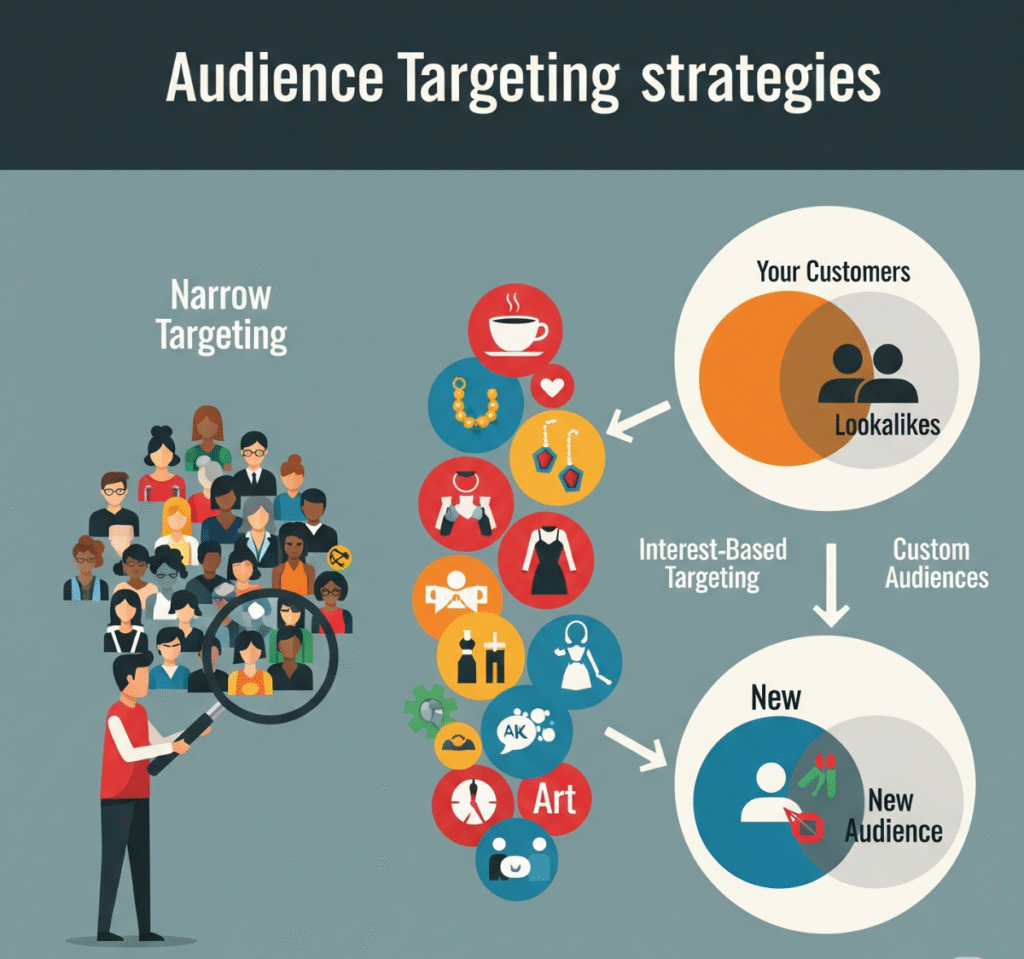
Continuous monitoring and adjustment are vital for small budgets. Don’t “set it and forget it.”
- Key Performance Indicators (KPIs) to Track:
- Reach & Impressions: How many unique people saw your ad and how many times was it displayed? (Good for awareness).
- CPM (Cost Per Mille/1000 Impressions): How much does it cost to get 1,000 impressions? (Indicates efficiency of reach).
- Clicks (Link Clicks): How many people clicked on your ad’s call to action? (Good for traffic campaigns).
- CPC (Cost Per Click): How much does each click cost you? (Indicates efficiency of traffic generation).
- CTR (Click-Through Rate): Percentage of people who clicked after seeing your ad (Clicks ÷ Impressions). An engaging commercial is indicated by a high CTR.
- Conversions: The number of desired actions completed (e.g., purchases, leads, sign-ups).
- CPA (Cost Per Action/Conversion): How much does each conversion cost you? (The most critical metric for conversion campaigns).
- ROAS (Return On Ad Spend): Revenue generated from ads ÷ Ad spend. This is the ultimate measure of profitability.
- Regular Checks: Check your campaigns daily or every other day, especially when they are new.
- Identify Underperforming Ads/Ad Sets: If an ad set is consuming budget without generating results, pause it.
- A/B Test and Iterate: Continuously test different headlines, visuals, CTAs, and audiences. Pause the weaker performers and scale the winners.
- Adjust Bids/Budgets: If your costs are too high, consider refining your audience or improving creative. If performance is good, consider incrementally increasing your budget.
The Importance of Clear Objectives and Realistic Expectations
Clear Objectives: know exactly what you hope to accomplish. If you want sales, optimize for conversions. If you want brand awareness, optimize for reach or impressions. Fuzzy objectives lead to wasted spend.
Realistic Expectations: A small budget will not magically generate millions in sales overnight. Regarding what your budget can accomplish, be practical.
- Phase 1: Learning & Testing: Initial campaigns are for gathering data and learning what works.
- Phase 2: Optimization & Scaling: Incrementally increase budget after finding winning combinations.
- Patience is Key: Digital advertising is a marathon; learn, adapt, and refine.
Conclusion:
Instagram offers immense opportunities for businesses of all sizes, even with budget constraints. Strategic planning, rather than large spending, determines success. By focusing on hyper-targeted audiences, compelling creatives, and effective CTAs, you can maximize your ROI. The power of A/B testing, leveraging Reels, and retargeting further amplifies your small budget’s impact. The goal is to spend smartly, not the most. Real-world examples demonstrate that even modest investments can lead to significant brand awareness, follower growth, and increased sales. Start small, test diligently, learn from data, and scale incrementally to harness Instagram’s potential for your business.
Ready to launch your Instagram Ads campaign on a budget?
Visit DevWhispers today to explore how our expertise can help you launch and optimize your small business’s Instagram ad campaigns for maximum ROI!
Digital Marketing & SEO Specialist | Helping Small Businesses Grow Online with Effective Social Media & Search Strategies | Focused on Pakistani Market Success